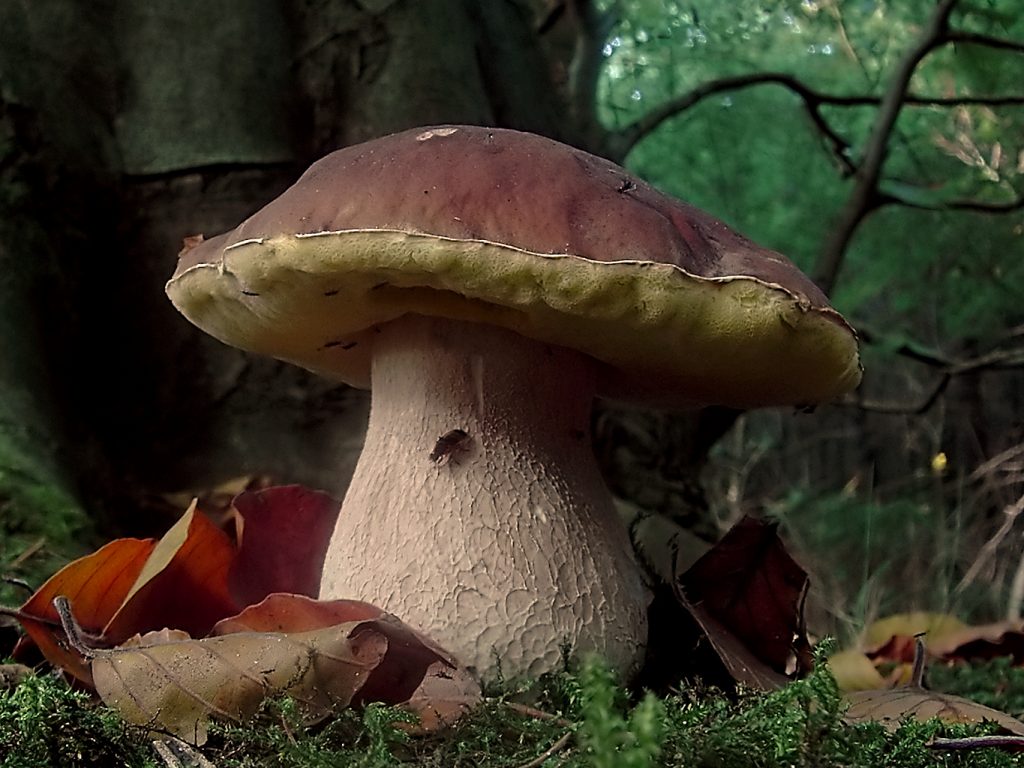Curious Words in Dutch 5: Eekhoorntjesbrood Posted by Sten on Nov 7, 2019 in Culture, Dutch Vocabulary
Yesterday, Karoly wrote about paddestoelenseizoen (mushroom season) in the Netherlands. A wonderful time of the year, with some delicious recepten (recipes) and maaltijden (dishes). And while mushrooms have some weird names like hanekam (literally “cockscomb”, chanterelle mushrooms), oesterzwam (oyster mushroom) or hoorn van overvloed (horn of abundance), there is one that is really quite curious: Eekhoorntjesbrood!
Previous posts in this series:
Bread for squirrels?
While the full name of this paddestoel (mushroom) is Gewoon Eekhoorntjesbrood, you can leave the gewoon away unless you plan a career in mushroom naming. Eekhoorntjesbrood (penny bun, or just porcini mushrooms) literally means “squirrel bread”. But what did this little paddestoel do to receive such a cool name? Is it simply because squirrels like to eat these mushrooms, like it’s their bread and butter?
Well, kind of. It is not just eekhoorns (squirrels) that like eating this paddestoel. Also muizen (mice) and ratten (rats) like to get a bite.
Ok, so that’s the eekhoorntjes part. But what about the brood?
Also quite simple: The top of the paddestoel looks like a bolletje (bread roll)!
So there you go – the origin of the name of this curious word!
Not so hard. Though not everybody seems to think about it that way…
The children’s TV program Het Klokhuis made their own theory: Eekhoorntjes claim that these paddestoelen are theirs, and anyone trying to take them away is getting attacked! Let this kok (chef) tell you all about it:
There you also hear how to pronounce the word! Can you pronounce it?
Eekhoorntjesbrood in the Netherlands is not used for a national dish, and you will also find the name “porcini” for these exquisite mushrooms. The Dutch also use them for risotto and the like. They do grow in Dutch forests, so you can find them if you go on a wonderful walk in the forest this fall!
What is eekhoorntjesbrood called in your language? Are there other curious names for paddestoelen in your language? Let me know in the comments below!

Build vocabulary, practice pronunciation, and more with Transparent Language Online. Available anytime, anywhere, on any device.







Comments:
Peter Simon:
This is one of the most popular kind of mushroom in Hungary, one kind of the “tinóru” family that we call “ízletes vargánya” (Boletus edulis in Latin). The other kind we use is darker and we call it “bronzos vargánya” (Boletus aereus in Latin). Most of our names for mushroom kinds have no meaning, the 2 first words here do: ‘tasty’ and ‘with bronze’, respectively. Both are used in all kinds of forms, for stew, baked, fried in breadcrumbs etc. I’ve experienced with sadness that people around me say nobody knows about mushrooms and I was strongly advised against collecting any of them – people are scared to death even by the thought.
If you want to educate them, you could write about 2 unmistakable kinds I’ve found in the city I live in in the Netherlands: the “inktzwam” and the “parasolzwam”. The latter is one of the best for frying in breadcrumbs, the other one is a tricky but tasty kind for stew. We have loads of recipes for various mushrooms, this excellent source of protein is worth bringing back into common knowledge – of course, with ample education.